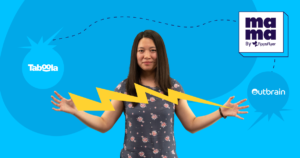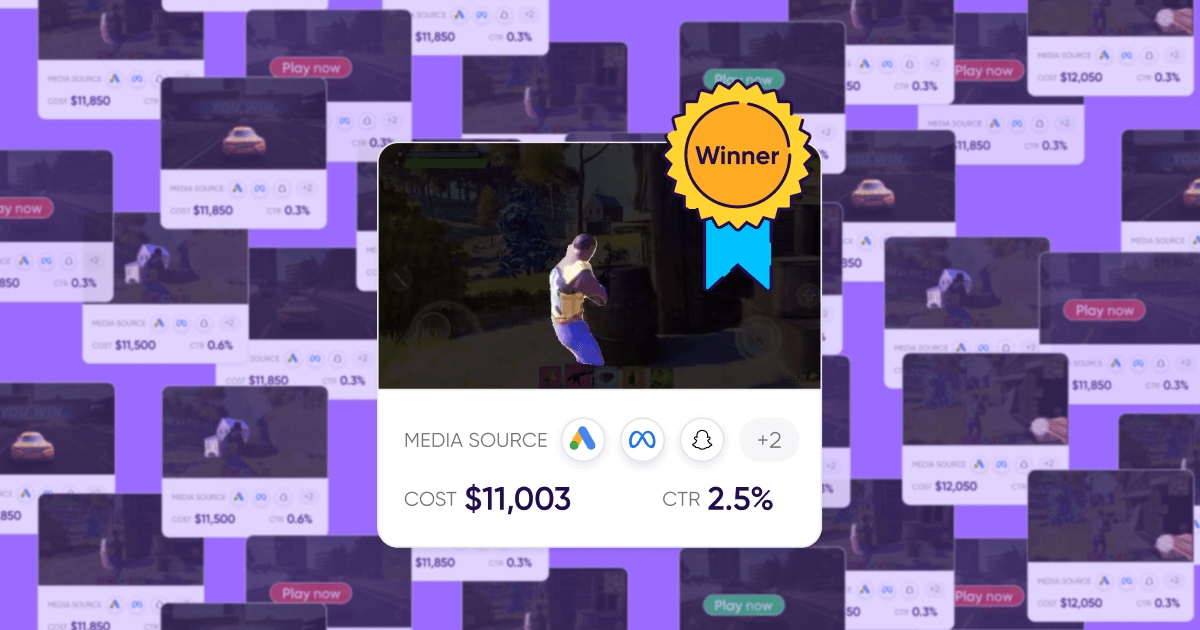
Scaling eCommerce app marketing with dynamic product ads
Welcome to another edition of MAMA Boards, an AppsFlyer video project featuring leading mobile marketing experts on camera.
For today’s mini whiteboard master class, we have Christian Eckhardt, CEO & Co-Founder at Customlytics, a leading full-stack mobile technology and marketing consultancy in Germany.
Ahead of the holiday season, Christian talks about common challenges that marketers face when they want to run paid advertising for an eCommerce app, and offers proven tips how to overcome those with Dynamic Product Ads.
Real experts, real growth. That’s our motto.
Enjoy!
Transcription
Welcome to this episode of the AppsFlyer MAMA Boards.
My name is Christian and I’m the co-founder of a company called Customlytics. We help apps being successful by delivering consulting for all things mobile marketing, so that goes from strategy to technology to actual tool integrations.
Today I’m here with you to talk a bit about common challenges that marketers face when they want to run paid advertising for an eCommerce app. And how to overcome those with Dynamic Product Ads.
So we will start off with the situation that occurs if you want to run paid advertising for an eCommerce app, and what you’ll probably end up doing in that case is that you have a media mix that is spread across a lot of different channels, like paid social which is essentially Facebook, Twitter, and other social networks, paid search which is the big search engines like Google, and some additional ad networks that you can of use to promote your ads.
And all of the issues that come from that are related to the fact that as an eCommerce business you will have a lot of different products, and what you do in advertising is essentially showing products to potential customers, and that kind of leads us onto the issues that come from running paid ads for an eCommerce app.
Top challenges for eCommerce app marketers
The issues are related to the ad creation primarily, so if you have a lot of products, what you have to do is you have to have a lot of ads, so you have to manually create a lot of those ads to run on all those different channels, and that’s just a lot of work.
The next problem that’s kind of even related to this is ad wearout, so in paid advertising what happens is that your ads over time will just wear out, meaning that they will decrease in performance so click-through rates and conversion rates will go down over time, and what you have to do in this case is you have to come up with a new ad design and if you have so many ads running at the same time, then this is again a lot of manual work.
The third problem really is that with the manual ads and just showing them to your customers, you will end up having quite a low relevancy because it’s not targeted. You just show whatever product to whatever user, and maybe it’s a good fit for the user but maybe it’s not. And the last point to that is that if you’re working with a media agency, it’s kind of getting even worse because they also need to request new creatives from you all the time, meaning that they just will bug you and kind of annoy you.
The solution: DPAs
And the solution to all of this is Dynamic Product Ads, or DPA’s the acronym for it. And Dynamic Products Ads are a mechanism to show ads to users in an automated fashion, especially for cases where there’s a lot of products.
So how it works is that there is basically a product catalog in place which is a big list of all the products that you have in your business and that are available on sale. It has all the different information that come with the products, and that is gonna feed it to the advertising creatives in an automated way, and all your campaigns are then running automatically based off of this product feed. So next up we will look at the different components that are needed to run Dynamic Product Ads.
And in easy words, everything that’s needed to run Dynamic Product Ads is a product catalog which is a list of all the products that are available in your eCommerce app.
It has to carry some specific information which we’ll go through later, but essentially think of it just as a long list of all the products that are available, together with all the information that belong to that specific product.
The second thing you need to make all of this personalized and targeted and – if you want to call it this – make it smart, is user signals. User signals is information about behavior of the user, essentially stuff like products that user would have already looked at, products that user would have already purchased.
Information like this which you need to run your Dynamic Product Ads in a smart way. And those two components together with the creative templates which are the design framework that you come up with, to show all of the different products, those elements are gonna form your Dynamic Product Ads. And next up we will go through the required elements in a bit of a greater detail. And if you break it down it’s basically five different components that are needed.
The first component is deep links, and deep links are like URLs on the web
It actually looks very similar, looks like a regular URL, and it’s a path that has information about where user should be redirected to inside of your app. So in this case it would be a specific product page, and that deep link would live behind the call to action of your Dynamic Product Ad, and then when a user clicks on it, he would get redirected to the correct product that he was looking at in your ad.
Deep links is something that your app developers have to define in the code of the app, so they have to go there and introduce a syntax, a logic for the app to understand how deep links work, and which kind of deep link triggers which page in the app, so it’s something your app developers have to do, make sure that it’s well documented and it’s aligned across all the different operating systems.
The second component is the product catalog itself
The easiest form of the product catalog is just a spreadsheet that has all the information about all available products in your business.
There are some requirements to how this product catalog has to look like, also depending on the platform that you’re using to run your retargeting campaigns. For example Facebook and Google have specific requirements on what you need to put in terms of columns in your product catalog. Information that has to be there for sure is stuff like the name of the product, the price of the product, if you have then something like a user rating for the product.
The deep link that we discussed before also has to be in that product catalog, so that the provider that you’re using to run the retargeting the campaigns in the end actually knows which page in the app the user should be redirected to. That’s a product catalog.
More sophisticated versions of the product catalog can be done in an automated fashion where you have some kind of feed going on of for example your own backend that has all the products and that’s then pushed automatically to the provider that runs your retargeting or Dynamic Product Ads.
The third component that you need for your Dynamic Product Ads is event and parameter measurement
So what that means is that you have to have information about the behavior of your users inside of your app. Without this you cannot run any targeted or personalized campaigns really.
That lives with your mobile measurement partner, and has to be integrated into the app as well by your developers. Important stuff to capture there is information about products that have been viewed by the user, products that have been purchased by the user, anything that you can think of that you would potentially use later on to fuel your Dynamic Product Ads campaigns should be captured as events and parameters that you measure inside of your app.
Component number four is the targeting strategy
The targeting strategy is something that you come up with from a marketing perspective. It’s basically your targeting plan of, this is the group of users that I want to target, and this is the common behavior that they all share. This is what you come up with in the targeting strategy.
Depending on the partner that you work with for your Dynamic Product Ads, they will probably also have some suggestions and there are some usual suspects when it comes to targeting strategy in eCommerce that is stuff like users have already purchased a specific product, and you want them to purchase something else. Or they have put something into the cart, but didn’t went to check out yet.
This is a target group abandoned basket that you will probably want to look after with your eCommerce advertising. And then the very last component number five is the creative templates, and the creative templates is really the design framework or the universal design that you want to use for all your dynamic product ads. It is something that has to be designed by your designer most likely, and it should be a kind of universal, not just background but also kind of just design language of how you want to display the different products that you have.
It can also be different depending on the category of products, so that got the more sophisticated versions, so for example all the shoes should have this or that kind of creative template, and then other products might have other templates.
Again, important to mention here is that there are external requirements to this, so if you want to run your Dynamic Product Ads on Facebook, there are specific requirements that you have to follow with your creative templates.
They have to fit the advertising formats that they are from. After going through the theoretical elements of the Dynamic Product Ads, we will now focus on the optimization.
The optimization of Dynamic Product Ads happens in a very similar fashion than any other online marketing campaign. It starts with the rollout, which is your first release of the campaign.
Then there’s the learning phase, which is you collecting data about user behavior, ad creative performance, and anything else that you can think of.
Generate learnings from that, and then apply it in the optimization phase which is where you come up with new design formats, maybe new targeting strategies, and roll that out again to kind of close the loop. And to make it a bit more practical, I’ve gathered three tips for you to follow when you want to run Dynamic Product Ads yourself, or you’re maybe just starting off with them.
Pro tips
Tip number one is to use different creative formats depending on the advertising platform that you use to run your ads on.
What I mean by that is that you should not go out there with a generic design template, one resolution one aspect ratio and give that to all the different advertising partners that run your ads. What you rather should do is look at the requirements of formats they have on offer, so that you can make full use of them. And what you will see from that is that performance will just be much better.
Tip number two. You should keep an eye on unprofitable products in your Dynamic Product Ad campaigns. So you should be looking at the per product performance of your campaigns, and maintain a blacklist of products that are just not performing well. There are different reasons why that can happen. It can be that the product looks appealing on the ad, but then people are just not buying it, or a lot of other reasons.
What you should do is remove those products from the product catalog because they will just decrease your campaign performance overall.
And then tip number three. You should always be looking for a new user signals, or new targeting strategies that result from user signals of your dynamic product ads campaign.
To give you an example, you might end up realizing that users that have bought some winter shoes might be also prone to buying a winter jacket. So that’s the most basic form of recommendations. Not even talking about machine learning here, this is something much more sophisticated. But really just come up with new strategies of how you want to target your users based on user signals.
So the bottom line of this is that there’s an evolution going on in the role of paid Marketing Managers, so the responsibilities of a paid Marketing Managers are changing drastically from repetitive daily tasks which is essentially the Marketing Managers are going to some dashboard and manually adjusting the bids up and down to optimize the campaign performance, towards machines taking over that piece of the equation and the human beings focusing on the remaining parts of that.
And the two remaining parts here really are the creative side, so that is coming up with new creative templates, coming up with new creative formats that might be yielding a good performance in the campaign, and the second piece is the technical foundations or the measurement, the deep links, all of that has to be set up by a human being once so that the machine can actually do its job properly.
So in short Dynamic Product Ads are not a luxury they are a necessity. And you should get going with this rather soon to be part of that revolution.
So this was it for today guys. If you want to watch more MAMA boards, click on the link on the top here, and other than that, thanks a lot for tuning in today and see you soon.



